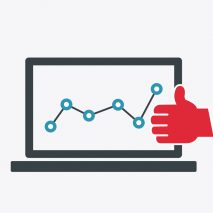Regardless of the industry your business operates in, finding and properly using the information needed to make shrewd, data-driven business decisions can be tricky. As we explored in a recent blog post, business intelligence (BI) provides a simple method of collecting, analysing and presenting important data in an organisation that can be used in strategic decision making.
However, how does business intelligence work? What are the individual components of this process? And how do you go about implementing this within your organisation? In this blog, illumo digital provides the answer to all of these questions and more.
How business intelligence works
Although the concept of business intelligence sounds relatively simple, the truth is that in practice it can be harder to deploy. For this reason, understanding how business intelligence works and seeking professional help before attempting to implement it to improve your business’ decision making is key.
Designed to provide a foundation for strategic decision-making – one based on data rather than gut feelings – business intelligence works by enabling organisations to bring together a range of data sources into a single unified platform or ‘data warehouse’. From customer relationship management (CRM) systems and sales performance dashboards/spreadsheets to supply chain information data, marketing analytics and other metadata, a single view that provides a collection of real-time data from across the business makes decision making at all levels an easier process. This process is known as Extract, Transform and Load (ETL).
The ‘extract’ and ‘transform’ parts of ETL refers to the safe identification of relevant sources of data and the seamless collection of this information, while the ‘load’ aspect refers to the process of uploading this data into one, easy to access digital location. For example, if one individual appears in a business’ HR system as an ‘employee’, in a project management tool as an ‘account manager’, and in an online search system as a ‘primary user’, a process of ETL will make sure that this individual’s three unique identifiers are all connected and linked in a meaningful and useful way in the business’ newly created data warehouse. Once all useful data has been collated in one data warehouse, comprehensive reports can be created easily by users, which in turn can help with decision-making.
What are the components of business intelligence?
There are three main components of business intelligence. These are:
- Data sources
This component refers to the operational databases, the historical data, and any other external data sources that a business has previously collected. These data sources may reside in many different, incompatible platforms and could contain a mix-match of unstructured forms of information such as tables, spreadsheets, images and and other multimedia data.
- Data warehousing
As touched upon above, this is the key to business intelligence. Data warehousing allows businesses to search through a vast collection of unstructured data quickly and efficiently, enabling you to prepare it for analytics services and easily examine interrelated information from multiple sources that can be used for data-driven decision making.
- OLAP (Online Analytical Processing)
With the aid of specific software, this component of business intelligence allows organisations to organise and select aggregates of data for strategic monitoring purposes. Used primarily for ‘data discovery’, OLAP is a powerful technology that is ideal for carrying out complex analytical calculations and creating reports for ‘what if’ budget/forecast planning.
- Advanced analytics
This relates to a set of tools which allows business leaders to look at the statistics of specific product-lines and/or services with the aim of using this data to make informed strategic decisions going forward. For example, a supermarket may analyse the sale of a certain item on a local, regional and national level before making modifications to buying and marketing decisions in the future.
- Real-time business intelligence
Real-time business intelligence is utilised when sorting and collecting business data. It allows organisations to get up-to-date data by directly accessing operational systems and has the potential to boost business-wide performance by helping you react to and respond to real-time trends, patterns and queries. For example, using real-time business intelligence, your data warehouse may provide the information you need to create special offers at the most opportune moments to achieve the highest conversion rate possible.
How to do business intelligence
Implementing business intelligence is a gradual process and needs to be done in a number of steps. These include:
1. Identifying correct data sources
Business intelligence relies on data, however, the right data needs to be collated in order for the strategy to be worthwhile. With this in mind, a business must have a clear idea of what it is trying to achieve and what specific types of data can help to meet these goals and targets. Once these data sources have been identified, data can start to be collected.
2. Collecting data
Now you know what data you need, it’s time to find it. Collecting all primary data sources you have identified, along with secondary sources, such as CRM systems and marketing automation tools, for example. With the help of your IT team, or outsourced professional help, these can then be integrated into your chosen BI software platform to create your data warehouse.
3. Building a business intelligence team
Made up of database experts, data scientists and data visualisation professionals, a dedicated business intelligence team should be put in place to work permanently on implementing, maintaining and ultimately improving your business’ business intelligence strategy. For smaller businesses, only one or two people may be required to do this. This team can also work on training other employees and whole departments on how to get the best out of a business intelligence strategy, including how data warehouses can be accessed and used to best effect, and how raw data can be transformed into truly useful information that can meaningfully impact business decision making in future.

